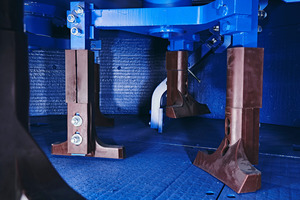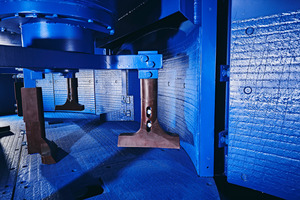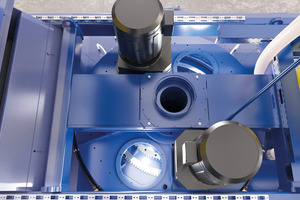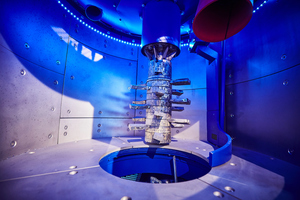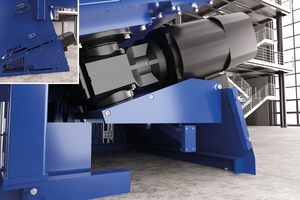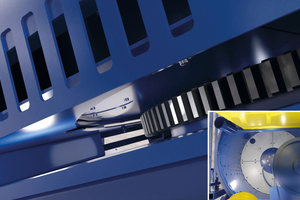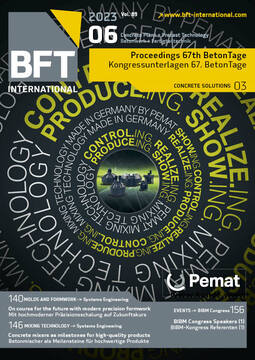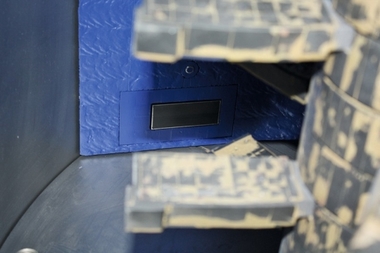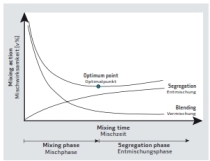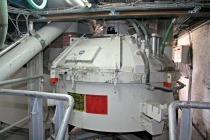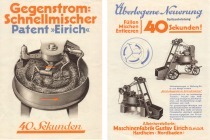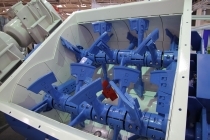Concrete mixers as milestones for high-quality end products
Masa is a manufacturer of efficiant and durable production plants for the building materials industry. The quality of the final products manufactured in these plants is influenced by many factors. Masa engineers continuously optimize the mixers with both service- and product-oriented features and focus on potentials for way, energy and operating cost optimization. These are explained here in this article Part 1.
Masa is a manufacturer of efficiant and durable production plants for the building materials industry. The quality of the final products manufactured in these plants is influenced by many factors in the various production phases. A decisive process step is the mixing of the materials. Therefore, Masa engineers continuously optimize the mixers with both service- and product-oriented features and focus on potentials for way, energy and operating cost optimization. These are explained here in Part 1 of this technical article (concrete mixers) and in Part 2 (AAC mixers) in BFT 7/2023.
The quality of raw materials plays a decisive factor in being able to achieve a homogenous mix of high-quality concrete inside the mixers. Both the raw materials and mixers significantly influence the appearance and performance of the finished concrete products. The production of main mix and face mix concrete have different criteria meaning the respective mixers require specific solution-based approaches. While in main mix concrete production, the primary requirement is to achieve the highest possible quantity of concrete while maintaining the quality, the focus in face mix concrete production is on achieving the highest possible quality while limiting the quantity to small batches. In addition to the pure performance of a mixer, plant operators value its serviceability and ease of maintenance. In 2022, Masa exhibited the PH 2000/3000 mixer optimized for main mix concrete production and the special S 350/500 face mix mixer at bauma in Munich. For both models, Masa engineers had developed new, service-oriented features.
Masa has been differentiating between different mixer concepts for main mix and face mix concrete for many years. The mixers of the PH class have been an integral part of the Masa mixer portfolio for decades. The Masa S 350/500 for face mix concrete was first built in 2008 and made its first public appearance at the NCMA Icon Expo in Indianapolis, USA in 2013. The high-tech mixer, then called Twister, was a real crowd puller at the Masa booth in Indianapolis as well as at bauma 2013. Stagnation is regression, which is why the mixer specialists at Masa do not lose sight of continuing to optimize our products. Both small detail modifications and larger improvements contributed to results that are worthy of note.
PH 2000/3000: Reliable supplier of large main mix concrete quantities
One noticeable feature of the Masa PH mixers that stands out at first glance is the massive and solid construction, which is reflected in its overall weight. For example, the largest Masa PH 3000/4500 mixer weighs significantly more than many of its competitors. Even the PH 2000/3000, which is almost 18 t, cannot be considered lightweight. The significant increase in the amount of steel used is noticeable: The overall design has a very high flexural rigidity, and the mixing trough is very dimensionally stable. As a result, the side scrapers, for example, continuously deliver reliable work results. In addition, the extra steel also increases the durability of the mixer.
The PH 2000/3000 main mix mixer with a powerful planetary gearbox and two external 45 kW drive motors of energy efficiency class IE3 can achieve a maximum output of 2,250 l per mixing cycle. Overall, it is characterized by short mixing cycles, low wear, and very high plant uptime.
Mixing on the PH 2000/3000 is performed by three robust mixing stars arranged in different positions. Each mixing star has three streamlined mixing arms, with one mixing arm installed offset in height. This arrangement takes into account the respective filling level of the material to be mixed and has a particularly positive effect on the homogeneity of the mixed concrete. The entire batch is captured and mixed uniformly and continuously.
Machine quality at Masa is synonymous with continuous product optimization. This is reflected in the modifications made to the PH mixing tools a few years ago: On the one hand, the mixer designers focused on a change in the shape of the mixing blades. Customer feedback regarding an even faster achievement of the desired degree of homogenization of the mixed material was consistently positive in this regard. On the other hand, Masa again focused on the materials used. In general, the company uses high-quality materials, which has a positive influence on both material costs and downtimes resulting from the wear-related replacement of mixing tools. The polyurethane back protectors optimized during this facelift, in addition to the protectors for the mixing arms, are precisely aimed at reducing wear. In addition, Masa reinforced the areas that are exposed to high abrasion in the mixing process, increasing the service life of the entire mixing tools.
Other design details that have already been tested are also aimed at practical improvements:
Two circumferential, offset scrapers ensure additional circulation of the mix flow and clean the side wall of the mixing trough quickly and thoroughly. With their different mounting locations, one scraper is responsible for the upper and one for the lower area of the side wall. They reliably prevent buildup that could later contaminate the mix and would have to be laboriously removed.
During operation, the plant operator can safely take samples via a sampling device. It is not necessary to open the mixing trough for this purpose. After successful completion of the mixing process, a slide opens one of the two outlets through which the finished mix leaves the mixing trough quickly and without residue. A mechanical discharge aid additionally accelerates this process and moves the remaining concrete residues in the direction of the pusher. The bottom of the mixing trough is cleaned during this action.
The four wing doors of the mixing trough can be opened completely on both sides. This creates a very large access opening, helping to simplify cleaning, care, and maintenance of the mixers by the operators.
The bottom and side linings of the mixing trough are easily replaceable and depending on the degree of wear, can be replaced separately. Masa uses highly wear-resistant material manufactured specific to the application process (side lining is 4 mm, which sits on a 6 mm base material, bottom lining is 5 mm sitting on a 10 mm base material).
Multiple connection points for feeding additives to the mixer are prepared as a standard on the PH mixer. Further inlets can be added if required by the customer.
Design optimizations at a glance
The latest modifications to the PH 2000/3000 are aimed at optimizing both the function of the mixer and the ease of maintenance.
Each time the mixer is emptied, the subsequent bucket conveyor (or, depending on the plant layout, the concrete silo of the block making machine) should be evenly filled with fresh concrete. Local cone formation or segregation, but also subsequent adhesion should be avoided. To control the material flow, baffle plates are installed below the mixer. Following analyses in various customer plants, Masa has now moved these baffle plates to the top, which has significantly improved the uniformity in the filling of the bucket conveyor.
Continuously assessing the degree of wear to the ring gear, pinion, and motor as well as monitoring the level of gear oil is essential for high plant uptime. Masa engineers have now developed a very convenient inspection opening for this purpose. The easily removable shutter of the opening has a diameter of 460 mm giving the plant operator a comprehensive, and if necessary, camera-supported view into the gearbox. When selecting the material for the shutter, Masa deliberately opted for a solid and safe metal variant rather than acrylic glass. The reasoning is obvious: On the one hand, the plastic alternative (which is still transparent at the beginning) quickly darkens from exposure to gear oil leading to insufficient visibility; on the other hand, further protective measures against breakage and puncture would have to be taken.
Another overhaul of the mixer was modifying and strengthening the attachment points of the mixing arms and the side scrapers, which has a positive effect on the service life of the mixing arms and the cleanliness of the mixing trough. Additionally, further small improvements have been made to optimize maintenance intervals and work.
S 350/500: The Masa face mix mixer
While the PH series models are designed for the volumes required by main mix concrete production, the S 350/500 face mix mixer is characterized by particularly small concrete batches of high quality.
The mixing tool is a modularly manufactured agitator made of highly wear-resistant material in combination with a counter-rotating mixing trough. The mixing trough is inclined by 20° so that the mixing process is separated from the transport of the mix. This prevents cement and color balling and achieves very good homogenization of colored concrete with fine aggregates and small batches. Per mixing cycle, the face mix mixer achieves an output of between approx. 120 l and a maximum of 350 l.
Aquados: Reliable water dosing based on precise measurement technology
The Masa water dosing system Aquados actively supports the mixing process. After filling the aggregates into the concrete mixer (or after the dry mixing time), the system determines the moisture content of the mix via a radar probe. By comparing the set water-cement value with the measured internal moisture, Aquados then automatically calculates and doses the additional amount of water required.
In the S 350/500, the probe is installed as a standard in the side scraper of the mixer. It is based on the measuring principle of the TDR (Time Domain Reflectory) method. The guided radar waves used here operate in a frequency range of 500 to 1,000 MHz and penetrate a large volume of material. The method provides precise measurements with low or high water content as well as at different material densities and grain sizes. Another advantage is that the amount of material that covers the probe, the conductivity of the material, and the local prevailing temperature at a site, are of secondary importance to achieving precise measurements in this process. A recipe-dependent adjustment of the water curve is carried out via the Masa plant control software.
Aquados offers a very accurate and consistent measurement of the moisture in any material composition, and automatically doses the required amount of water to be added to the mixer. Optionally, Masa also supplies the water dosing system with Bluetooth technology and a bottom probe for wireless transmission of measured values.
In focus: Usability and suitability for day-to-day use
The entire Masa mixer portfolio is characterized by durability, a robust design, and ease of maintenance. Similar to the main mix concrete mixers of the PH series, Masa also builds the S 350/500 modularly so that the installed wear parts can be easily replaced. Like the PH series; large, hinged doors make cleaning and maintenance of the mixer much easier. Downtime costs time and money, so unplanned downtime must be kept to a minimum. Masa engineers again concentrated on optimization measures aimed at reducing this. In the process, they identified one component that is particularly significant: the drive motor of the S 350/500 mixing trough, which weighs about 250 kg. The challenge here was not with the motor itself, but rather the analysis of the installation location lead to an interesting concept. Since the motor has historically been in a place that is difficult to reach with normal lifting equipment, any necessary motor removal is no easy undertaking. The new design of the lower steel frame significantly improves accessibility to the main drive of the mixing trough. Screw connections now make it easier to remove the side cover plate, which clears the way to the motor. The designers created the possibility to drive under the motor with a scissor jack, lower the motor and pinion, and drive out sideways. Locking screws ensure precise positioning of the pinion and ring gear during subsequent reassembly. Masa reduces the corresponding downtime by more than 50% with this modification.
In their analysis, the Masa engineers also set their sights on small but thoroughly useful improvements in the S 350/500‘s suitability for everyday use.
The Bluetooth probe, which is optionally available for the water dosing system, is positioned flush with the bottom of the mixing trough by means of a fastening ring. However, the different wear behavior of the materials used for the fastening ring (hard metal) and mixing trough lining (stainless steel) can lead to a change in positioning, which is determined by a visual inspection. If the probe needs adjustment, it can be a very time-consuming task due to the limited space available and the special tools required. The solution to this problem is as simple as it is clever: A small, easy-to-remove insert plate now allows direct and, above all, maintenance-friendly access from below, and the adjustment can be made using adjustment screws. For the plant operator, this means significant time savings during probe adjustment or probe replacement, which is an indispensable component to achieving reliable measurement results.
The drive motor for the rotating bottom cover of the mixing trough, which was previously mounted on the side, sits on a stand in the modified version and is now more easily accessible. The sealing joint on the closing lid is blown off so that the lid always closes cleanly. Similar to the PH series, the designers incorporated additional small optimization measures on the S 350 model.
CONTACT
Masa GmbH
Masa-Str. 2
56626 Andernach/Germany
49 2632 9292 0
Masa GmbH
Osterkamp 2
32457 Porta Westfalica/Germany
+49 5731 680 0

